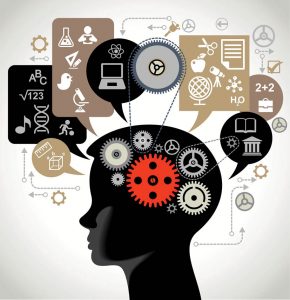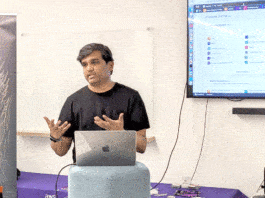
The concept of Al-Enabled Coworker is relatively new for many of the business enterprises. If used effectively, it promises to transform the way we operate, work or live. It has the potential to make many business processes faster, simpler and less error-prone. In light of the heavy investments involved, this article directs readers to the open source solutions available, to accelerate the pace of its adoption.
The modern enterprise evolved over the late nineteenth and early twentieth centuries. Since then, technology has always been performing the role of a key enabler to expedite business innovation. Cognitive computing technologies seem to be yet another promising catalyst for enterprise transformation. These technologies aim at bringing about unprecedented levels of automation, and are poised to improve productivity across functions.
Cognitive systems attempt to simulate how humans think and learn. These systems imitate humans in learning from past experiences and use that knowledge for reasoning, making hypotheses, inferring, solving problems or making decisions. Combined with automation, enterprises can leverage these systems to automate even judgement based activities that are a part of a business process. This way, they can augment human skill and expertise so that our time is used more effectively.
Smart machines or AI-enabled coworkers, as analysts fondly call these systems, can simplify and accelerate many business processes to a great extent, and facilitate business agility and innovation. They can help a marketing executive by analysing the customer base and identifying the right target segment for the next campaign. They may indicate probable customer churn and help to identify the key parameters causing it. They can also help a service engineer by providing a note of caution regarding a potential outage. Or they may assist a call centre executive in reducing the resolution time for a query. They have the potential to transform the way the business operates today.
The pillars of cognitive technologies
The evolution of cognitive technologies involves various streams of artificial intelligence (AI). Many cognitive technologies may be relevant for enterprises, including robotics, rules-based systems, computer vision, optimisation, planning and scheduling. However, in 2016 we expect the most important cognitive technologies in the enterprise software market to be:
- Machine learning – This is the ability of computer systems to improve their performance by exposure to data but without the need to follow explicitly-programmed instructions. This is likely to be the most prevalent. It enhances a large array of applications, from classification to prediction, and from anomaly detection to personalisation.
- Natural language processing (NLP) – This technology enables computers to process text in the same way as humans, for example, extracting meaning from text or even generating text that is readable, stylistically natural and grammatically correct. It has many valuable applications when incorporated in software that analyses unstructured text.
- Speech recognition – This is the ability to automatically and accurately transcribe human speech, and the technology that enables this is useful for applications that may benefit from hands-free modes of operation.
Enterprise adoption
Many leading software companies have already discovered the potential of cognitive technologies to improve the core functionality of their products, generate new and valuable insights for customers, and improve business operations through automation. These benefits are simply too compelling for software companies to ignore.
Analysts predict that by the end of 2016, a majority of the world’s largest enterprise software companies (by revenue), will have integrated cognitive technologies into their products. According to the analysts there would be a steady increase in the adoption in the coming year. Following this trend, some business software companies have developed AI capabilities in-house, but many others are acquiring capabilities through mergers and acquisitions, this trend is expected to continue in 2016. Strong support from venture capital investors is also helping to further commercialise this market. Since 2011, US-based startups that develop or apply cognitive technologies to enterprise applications have raised nearly US$ 2.5 billion, suggesting that the biggest near-term opportunity for cognitive technologies is in using them to enhance business practices.
Implementation challenges
The capabilities around cognitive computing and the market’s expectation from them are driving the need for a new class of supercomputer systems, which can enable the synergy of advanced analytics and Big Data technology. However, there are challenges that we need to be aware of. Cognitive computing technologies are quite complex, inherently. The complexities imply steep learning curves and, hence, increased turnaround times. Building capabilities around these systems requires considerable amount of time and effort.
There are many solutions involving these technologies from various leading vendors. Many of the
platforms and the frameworks, however, are extremely expensive and call for heavy infrastructure.
Implementation of cognitive automation calls for huge amounts of investment.
Open source tool sets—a probable solution
Till recently, cognitive computing was confined more to the academic world. That could be the reason why a huge number of open source tools and libraries have evolved around cognitive computing and related technologies. Today, a wide range of solutions, along with the huge knowledge and code base, are available in the open source domain.
This rich repository can enable enterprises to learn and experiment with these technologies, thus increasing their reach. These solutions will allow enterprises to create a quick prototype around cognitive computing. This way, enterprises can check the viability of the underlying idea and get quick feedback about it.
Some of the popular open source solutions in the area of cognitive computing are:
- R: R is a language and environment for statistical computing and graphics. It provides a wide
variety of statistical (linear and non-linear regression, classical statistical tests, time-series analysis, classification, clustering, etc) and graphical techniques. It is highly extensible. The R language is often the vehicle of choice for research in statistical methodology, and R provides an open source route to participation in that activity. - Python: While R is specifically created for statistical analysis, Python also has a rich set of
machine learning implementations. It is widely used among the scientific community. Being an interpreter, high-level programming language, Python is a good fit for machine learning implementation, as quite often, this calls for an agile and iterative approach. - Apache Mahout: This provides an environment for quickly creating scalable machine learning applications.
- H2O: H2O is for data scientists and application developers who need fast, in-memory, scalable machine learning for smarter applications. H2O is an open source parallel processing engine for machine learning.
- RapidMiner: RapidMiner is a platform that provides an end-to-end development
environment for machine learning. Through a wizard-driven approach, RapidMiner allows
the user to rapidly build the predictive analytics model.
Points to ponder
To check the viability of a business case, it would be a good idea to first take baby steps rather than taking a huge plunge. Using open source solutions, enterprises can avoid upfront investments and check the viability of various cognitive technologies.
To check the viability, first we need to identify the right use case. We should have thorough understanding of the business problem it attempts to solve. This has to be followed by right selection of the technology solution suitable for implementation.
As seen in the previous section, a wide range of cognitive computing solutions are available as open source. Each solution has evolved to cater to a specific set of business problems. Each one of them has its own target user group. So to get the desired result, we need to first have a clear understanding of the problem at hand. Based on that understanding, we need to choose the right tool set to best solve that type of business problem. With a quick prototype on selected small set of use cases implemented with right choice of open source solutions would enable the enterprise to check the viability of the cognitive automation initiative.




